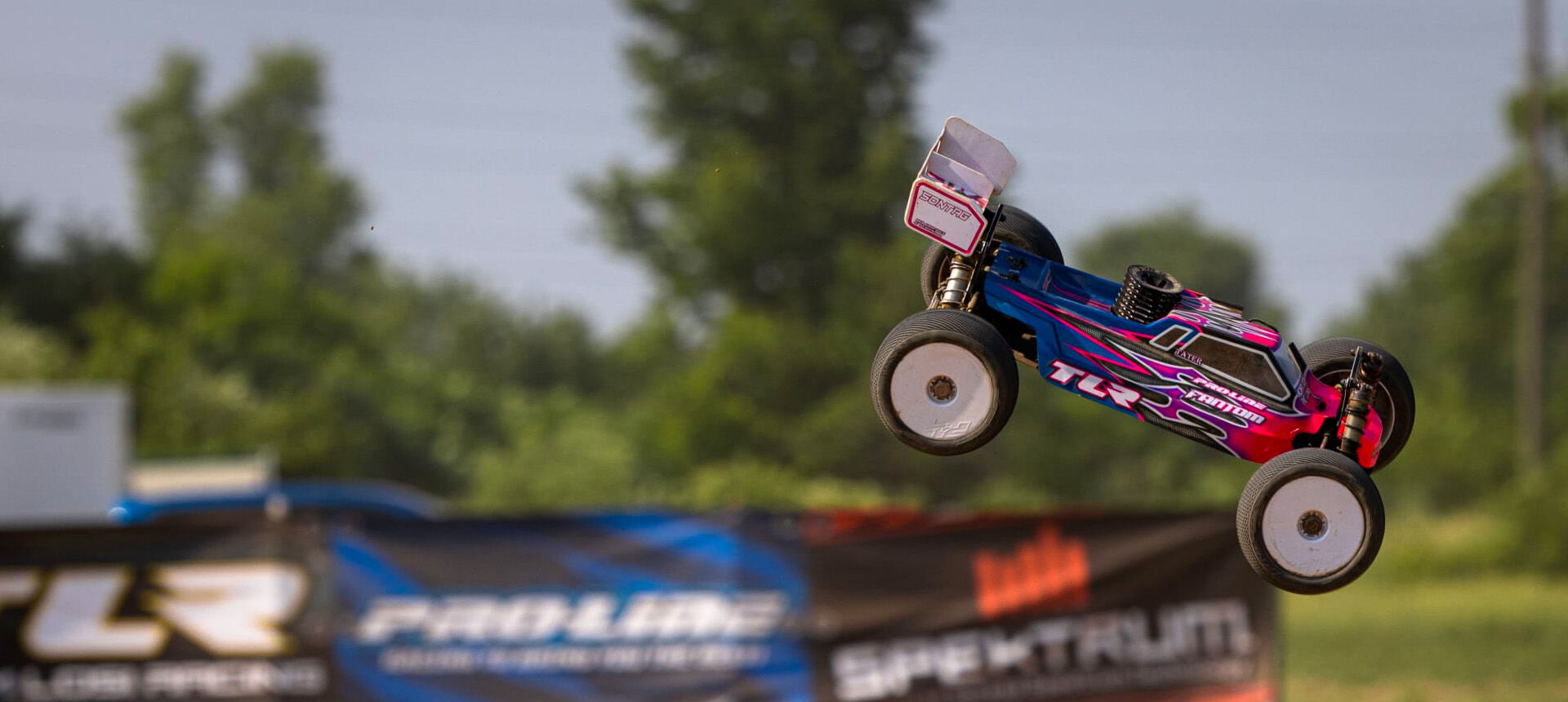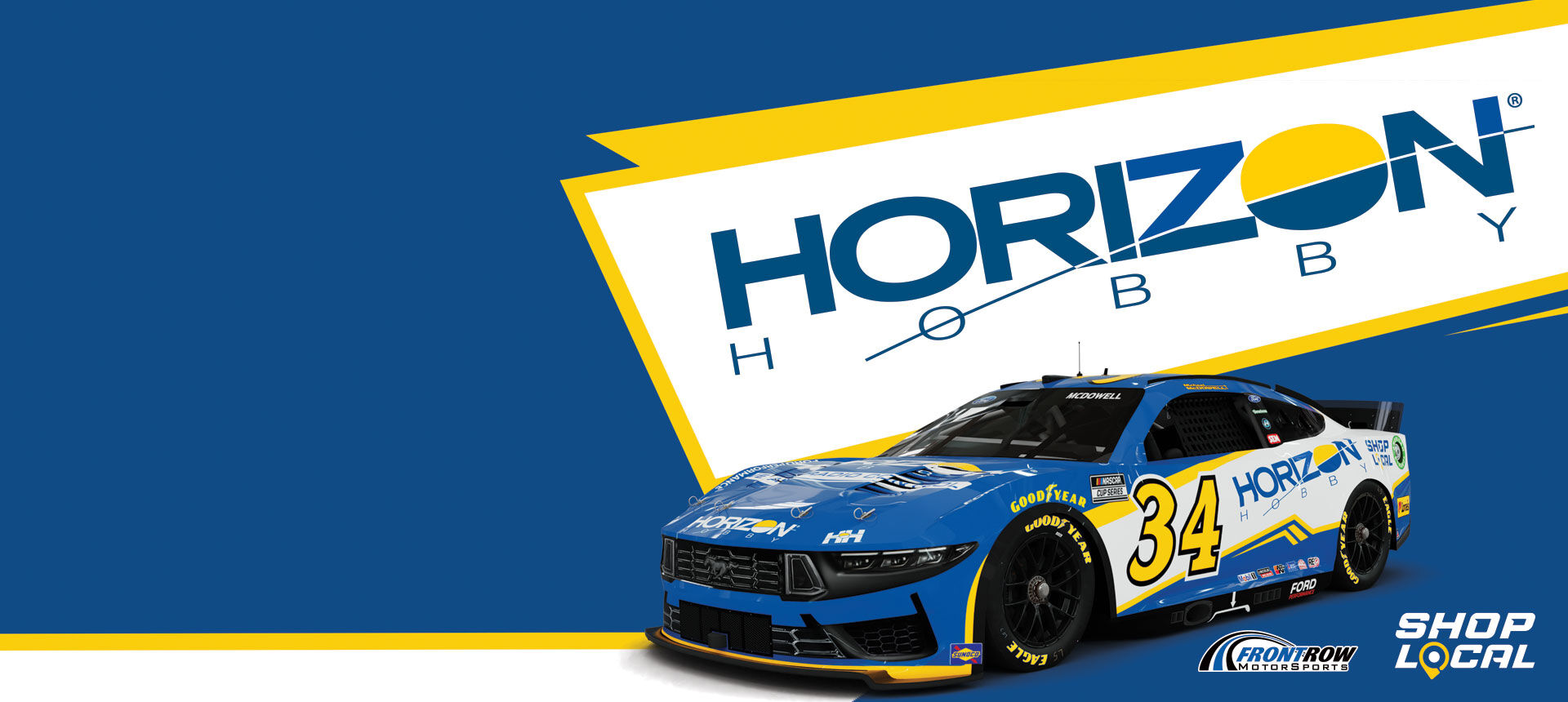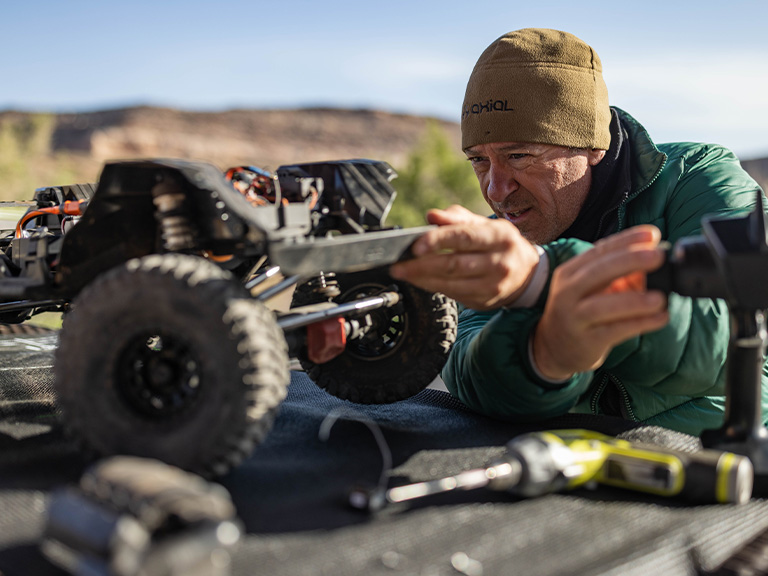
Five Tips for Getting Started in RC Racing
Posted: 1/19/24
RC racing and RC bashing are the two most basic ways to have fun with remote control cars. Both provide an exciting test of driving skill and vehicle performance. The main difference between them is this: RC bashing can be done alone and freestyle in your backyard, while organized RC racing requires a track, rules, and competitors to race against.
Most forms of RC racing are smaller versions of full-size racing events, such as drag racing. The rules are similar, and the RC cars are scale replicas of those driven in the real races. When designing cars for RC racing, manufacturers usually emphasize realism, handling, and above all else, speed. The participants often use the same strategies and techniques to win as those in real racing do, like drifting through the corners. Being able to experience the thrills of full-size racing is exactly what drives many people to buy RC cars in the first place.
You can take part in RC racing no matter what your age or experience level. If you really want to be successful, however, preparation is essential from the very start. With that in mind, here are five tips for getting started in RC racing that every beginner should know.
1. Visit your local RC racing track.
If you want to race RC cars, you’ll need a place to do it. You’ll also need some like-minded people to race with. The best place to find both is at the nearest RC racing track.
The staff at your local hobby shop should be able to tell you what RC racing events are coming up and where they’re being held. Go check one out. Walk through the pit area and talk to the drivers. Tell them you’re interested in racing, too. Most of them will be happy to chat with you — especially the sponsored drivers, who hope to leave you with a positive impression of the manufacturers they represent.
Be sure to find out what RC racing classes are available at the track before you buy an RC racing car. If you get your car first and then learn you can’t run it there, the most convenient opportunities to race become limited right away. Also get some feedback from the drivers on what RC car and class they’d recommend for a first-time racer. Tracks usually have a novice or a rookie class for people who are just starting out in RC racing.
Don’t forget to ask how you should go about signing up for a race at the track. There’s no single method used from one track to the next. Often the track director or one of the crew will circulate among the drivers on race day with a clipboard, collecting names, entry fees, and each driver’s class. If you expect to race, you’ll need to make sure that your name is on the list and your fees have been paid.
2. Get an RC racing car.
As mentioned earlier, when you go shopping for your RC racing car, look for one that you’ll be able to enter in popular events at the most convenient local tracks. That way, you’re always likely to have a place to race it and friends who’ll race with you.
Some RC racing newcomers might be tempted to get the most expensive car they see, thinking it will make them look less like a beginner at the track. Do your budget a favor and resist that urge. Instead, choose a good, affordable RC car that will be easy to repair, easy to maintain, and easy to upgrade later when you have more experience and need a more capable model. You don’t need to spend a lot to have fun when you’re starting out.
Also find out if your local hobby shop carries parts for your chosen RC racing car before you buy it. Everyone breaks something now and then. It’s part of the learning curve for inexperienced drivers. But hobby-quality RC racing cars are pretty robust. As your driving skills improve, you’ll be better able to avoid situations that cause damage. In the meantime, having a handy resource for replacement parts lets you spend more time on the track and less time waiting to get your car fixed.
3. Practice before you start RC racing.
After buying your RC racing car, take some time to just have fun with it. Get some RC driving experience before you take it onto a race track. Familiarize yourself with the car’s operation, handling, and capabilities in a stress-free setting before you add in the pressures and distractions of competition.
Before your event begins on race day, you’ll have a chance to get accustomed to the real racing environment. In most cases, the track will open in the morning to let drivers practice for free. You’ll be able to run laps at your own pace.
But be careful and pay attention. Unless you’re actually going to drive it, never put your RC racing car down on the track. Too often, a racer who’s already practicing will come tearing full-speed down the straightaway and accidentally hit a car that’s just sitting there. Until you intend to run it, keep your car somewhere safe and out of the way.
4. Put together your RC racing pit box.
If you’re going to be involved in RC racing, you’ll need a pit box stocked with items you should have with you at the track. What should be in it? Here are some of the essentials.
Batteries and charger
Assuming that your RC racing car is electric powered, it would be a good idea to have two or more battery packs — one to put in your car and a fully charged spare to replace it immediately when the first battery’s power is depleted. You might go through as many as five fully charged battery packs during the typical RC racing format of three qualifying rounds, one final round, plus a practice round.
Buying five battery packs might be cost-prohibitive when you’re just getting started. Take a compatible charger with you to the track, however, and you’ll be able to recharge one battery while you’re using another. Chargers are available with a wide range of capabilities and prices. Make sure your choice is compatible with your battery’s chemistry (for example, NiMH or LiPo). If your track has no AC power available in the pit area, you’ll need a DC charger with its own power supply, such as a 12V car battery.
Tires
Just as they do in full-scale racing, tires wear out quickly in RC racing. At the same time, their ability to maintain traction plays a huge role in how competitive you will be. Keep a second set of mounted tires ready in your pit box so your car won’t lose its grip.
Dozens of different tire compounds and tread patterns are available. Ask the experienced racers at your local track which ones produce winning results for them. The best tire to use might change from one day to the next, depending on the temperature, the track conditions, and many other variables. Keep a variety of different tread patterns and compounds in your pit box so you can experiment and see which works best on a given day.
Tools
Your pit box should include some basic RC racing tools for maintaining and repairing your RC car at the track. As your experience grows, you’ll also use tools for tuning and adjustments. The right tool makes any task easier. Having a quality package of RC tools is worth the investment, and it will last you a lifetime.
When starting out, you should at least have a good set of nut drivers and hex drivers. Among other things, they’ll come in handy for changing wheels quickly during a race. Later, you might add specialized tools like a ride height gauge and digital calipers to your pit box. But these aren’t really necessary for the beginning racer.
Replacement parts and other gear
At some point during the course of a race you’re bound to be involved in a crash. Your RC racing car will lose some pieces of small hardware and possibly suffer damage to more significant parts. Be prepared by stocking your pit box with spares of the most vulnerable parts, like front suspension arms, front shock towers, front C hubs, and axle pins. Also include plenty of spare body clips, wheel nuts, and screws.
If you’re racing outdoors, dress appropriately for the season and for the potential hazards at the track. Long sleeves, eye coverings, pit gloves, and boots are recommended. Protect yourself from prolonged sun exposure with a hat and sunscreen, and bring plenty of water to stay hydrated.
5. Learn what to expect on race day.
You’ll probably be charged a fee to race if you’re not a member of the RC club that operates the track. The fee varies from club to club — ask a member or check their website for details. The money goes to cover the facility rental, insurance, and upkeep. Joining the club is optional, but one of the perks is getting a discount on the race fees. If you expect to be racing often, it’s worth it.
When the big day comes, get to the track early to set up your pit area and practice. At some point the race director will close the practice and hold a drivers meeting. The meeting is crucial — don’t miss it. That’s where you’ll learn the format of the races and the schedule. Official sheets that list what drivers are in each race will be posted after the meeting.
Expect to have other responsibilities on race day besides driving your own car. You’ll also be asked to help out as a turn marshal when you’re not involved in a particular heat. Turn marshals are positioned at various points around the track. If a car flies off the track or flips over, it’s the nearest turn marshal’s job to quickly get it back on track, upright and pointed in the right direction. Being alert is a must. You not only have to help other drivers stay in the race, but also avoid getting in the way and being struck by a fast-moving car.
When RC racing, fun comes first.
One of the most important things to remember when you’re RC racing for the first time is that you’re there to have fun. RC racing champions aren’t made overnight. The drivers who are at their peak in the sport have been racing for years.
So go with realistic expectations. Learn. Get some experience. Use the opportunity to hone your driving skills and make some new friends. Winning will come with time.
Shop the Story

Words by Wally Armstrong
Wally has been writing about the RC hobby since 1987, when he was hired by Hobbico as a Copywriter after completing his master’s degree in English in 1983 and teaching for several years. He managed the Hobbico copywriting team until 2018, when Horizon Hobby purchased the company and brought him on board as a Senior Copywriter. Wally especially enjoys getting a first look at new Horizon RC products from the Product Development teams – and having the privilege of sharing details about their innovations with RC hobby customers.
Related Articles

Horizon Hobby Returns to Front Row Motorsports and Michael McDowell
After a thrilling victory on the road course last year at the famed Indianapolis Motor Speedway, the Horizon Hobby colors will return to defend its win with Michael McDowell and the No. 34 NASCAR team.
Learn More

Horizon Hobby Partners with Front Row Motorsports
Horizon Hobby, LLC is teaming up with FRM (“Front Row Motorsports”) with a three-race partnership with Daytona 500 winner, Michael McDowell. Races with the partnership car will happen on June 26th and 27th and July 18th at the New Hampshire Motor Speedway.
Learn More

Tune Your RC Suspension Setup for Better Handling
Improve the steering and handling of your RC vehicle on any surface with these proven RC suspension tuning tips.
Learn More